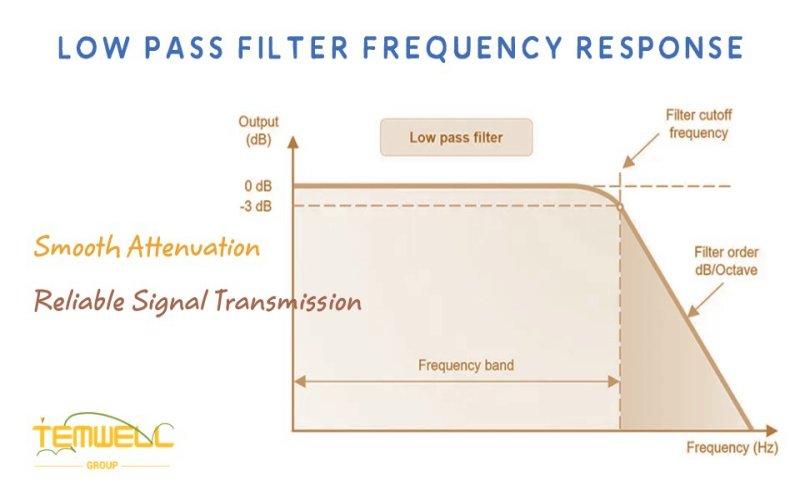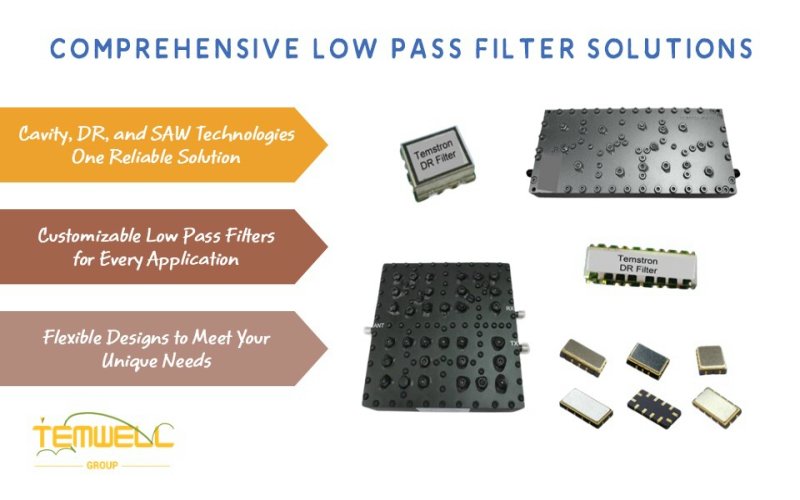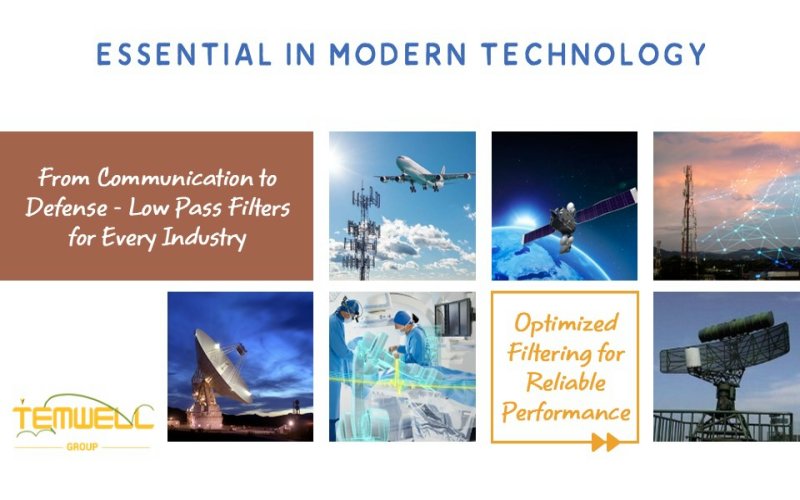What is LPF Filter (Low-pass Filter)?
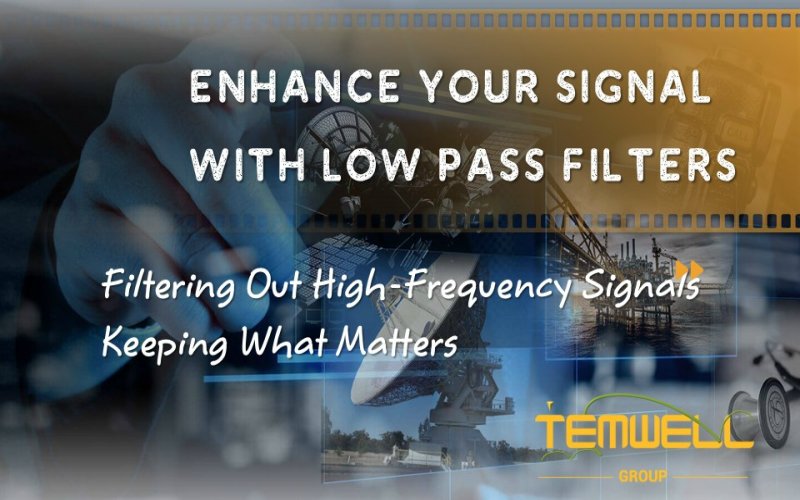
What is LPF Filter?
LPF Filter is the abbreviation of low-pass filter. It is a common electronic component that allows low-frequency signals to pass through while attenuating or filtering out high-frequency signals. Simply put, it helps us retain important signals, such as stable radio waves, and remove unwanted noise or interference. This type of filter is commonly used in radio systems.
For example, when a radio receives a signal, a low-pass filter can filter out high-frequency noise, such as interference or unnecessary radio waves, making the signal more stable and clearer, allowing us to receive important information more effectively.
You can think of it as a sieve that eliminates out noise and leaves only the necessary signals. Low-pass filters are important tools in radios and other electronic devices, as they enhance signal quality and reduce interference.
LPF Filter is widely applied in various fields. Common usage scenarios include:
1 Audio Processing:
Used to remove high-frequency noise or adjust tonal quality, making the audio clearer or softer.
2 Image Processing:
Helps blur images or remove noise, making them smoother.
3 Signal Processing:
Suppresses high-frequency interference or prevents aliasing, ensuring signal clarity.
4 Power Filtering:
Eliminates high-frequency noise in power supplies, ensuring stable operation of electronic devices.
5 Data Smoothing:
Removes high-frequency fluctuations in data analysis, making data more stable.
6 Video Processing:
Reduces noise in videos, enhancing image quality.
7 Digital Control Systems:
Smooths control signals, improving system stability and accuracy.
Performance parameters of LPF Filter
The main parameters of a low-pass filter (LPF Filter) include the following:
1. Cutoff Frequency (fc):
The cutoff frequency is the highest frequency that the filter can pass. For a low-pass filter, signals below the cutoff frequency are barely affected, while signals above this frequency are gradually attenuated.
2. Bandwidth:
The bandwidth refers to the width of the signal frequency within the cutoff frequency range. In a low-pass filter, attention is primarily given to the lower cutoff frequency since signals below this frequency pass through with minimal attenuation.
3. Stopband Attenuation:
Stopband attenuation refers to the degree of signal attenuation beyond the cutoff frequency. It indicates the filter's ability to reject unwanted high-frequency signals. This parameter is usually expressed in decibels (dB) and represents the signal reduction in the stopband.
4. Roll-off Rate:
It indicates the rate at which the frequency response transitions from the passband to the stopband. The narrower the transition band, the more accurate the filter performance, but the difficulty of design and implementation will also increase accordingly.
5. Passband Ripple:
Passband ripple refers to the amplitude of gain variation within the passband and is usually used to describe the fluctuation of the filter. Smaller values indicate a flatter curve.
6 Insertion Loss:
Insertion Loss indicates the degree of energy loss after a signal passes through a filter and is usually expressed in decibels (dB). Lower losses mean more efficient energy transfer.
7Power (Power Handling Capacity):
Power handling refers to the maximum input power that the filter can handle, ensuring that it will not be overloaded or damaged under normal operating conditions.
The features of LPF Filter:
Low-pass filter (LPF Filter) play an important role in various electronic and communication applications. The following are the key features and limitations of LPF Filter:
1. Limited frequency selectivity
LPF Filter can only attenuate signals above the cutoff frequency but cannot further distinguish between different frequency components within the stopband. In applications requiring precise frequency separation, relying solely on an LPF Filter may not be sufficient.
2. Signal integrity within the passband
Although the LPF Filter can maintain the basic integrity of the signal within the passband, there may be passband fluctuations in the actual design, resulting in slight changes in the signal amplitude. When the signal quality requirements within the passband are high, it is essential to evaluate whether the LPF Filter provides sufficient stability for the specific application.
3. Combination use with Other Filter types
LPF Filter is often used in conjunction with other filters, such as band-pass filters, band-stop filters, or high-pass filters, to enhance frequency selectivity. In applications with multi-band requirements, LPF Filters can assist other filters in handling the frequency ranges not covered by them.
Low-pass filters are widely used in various electronic and communication systems because of their simple design and clear functions. However, limitations in its frequency selectivity and signal protection capabilities mean that it is more suitable for applications with lower specification requirements. Especially in RF communication products, LPF Filter is often used as an auxiliary filter in conjunction with other filters to meet higher performance requirements. In design and application, it is necessary to balance the performance, cost and implementation complexity of the filter according to specific needs to achieve the best effect.
What kinds of LPF Filter are there?
1. Cavity LPF Filter (Cavity Low Pass Filter)
Cavity LPF Filter (Cavity Low Pass Filter) is a special electronic component that allows low-frequency signals to pass smoothly while blocking high-frequency signals. Its structure is like a metal box with a cavity of a specific shape inside, which uses the reflection and resonance of electromagnetic waves to filter signals. Compared with dielectric resonator low-pass filters (small size, suitable for medium and high frequencies) and SAW low-pass filters (smallest size, suitable for low-power devices), cavity filters have the advantages of low loss, high power handling capability, high Q value, and strong durability. They are suitable for radar, satellite communications, and radio base stations, helping devices receive clearer signals and reduce interference.
2. DR LPF Filter(Dielectric Resonator Low Pass Filter)
A Dielectric Resonator LPF Filter (Dielectric Resonator Low Pass Filter) is an electronic component that allows low frequency signals to pass and blocks high frequency signals. It uses special ceramic materials as resonators and filters signals through the resonance of electromagnetic waves inside the material. Compared with cavity low-pass filters (large in size, suitable for high-power applications) and SAW low-pass filters (smallest in size, suitable for low-power devices), dielectric resonator filters have the advantages of small size, low insertion loss and high frequency stability. They are suitable for 5G communications, wireless communication equipment and radar systems, providing high-efficiency and lightweight signal processing solutions.
3. SAW LPF Filter (Surface Acoustic Wave Low Pass Filter)
SAW LPF Filter (Surface Acoustic Wave Low Pass Filter) is an electronic component that allows low frequency signals to pass and blocks high frequency signals. It uses the sound wave vibrations on piezoelectric materials to filter signals and attenuate high-frequency components. Compared with cavity low-pass filters (large size, suitable for high-power applications) and dielectric resonator low-pass filters (small size, suitable for medium and high frequencies), SAW filters have the advantages of smallest size, low cost, and easy mass production. They are suitable for mobile phones, wireless modules, Wi-Fi and RFID devices. They can provide lightweight and efficient signal processing solutions, but their power processing capabilities are low and they are suitable for small electronic devices.
What product LPF Filter could be used in?
When designing a product, a suitable filter will be selected based on actual needs. If the primary goal is to preserve low-frequency signals and reduce high-frequency noise or interference, a low-pass filter would be used rather than a high-pass filter, band-pass filter, or other type of filter.
The following are some typical applications:
1. Radio receiver (reducing high frequency noise)
In a radio receiver, the antenna picks up signals of various frequencies, some of which are high-frequency signals that are noise or unwanted interference. The low-pass filter can filter out these high-frequency noises, making the received low-frequency signals (such as voice or important communication content) clearer.
2. Sensor signal processing (smoothing measurement data)
Devices such as temperature sensors and pressure sensors may produce short-term high-frequency fluctuations due to environmental noise or changes in electronic components. But in fact, what we care about is the long-term trend of change, not these rapidly changing high-frequency components. The low-pass filter can smooth the measurement data and make the reading more stable.
3. Audio processing (removing high-frequency interference)
In radio broadcasting or voice communications, high-frequency noise may come from interference in electronic equipment, such as noise on power lines or other high-frequency signal sources. A low-pass filter removes this high-frequency noise, making speech or music sound clearer.
4. Analog-to-digital conversion (to prevent aliasing)
When converting analog signals into digital signals (such as ADC, analog-to-digital converter), if there are too many high-frequency components, it may cause "aliasing" and affect the accuracy of the digital signal. The low-pass filter can remove these high-frequency components, making the converted digital signal more accurate.
5. Radio transmission (limit the spectrum range to avoid interference)
At the radio transmitting end, the signal may contain some high-frequency components, which may affect devices in other frequency bands. The low-pass filter can limit the frequency spectrum range of the transmitted signal to ensure that it does not emit high-frequency interference beyond the allowed range.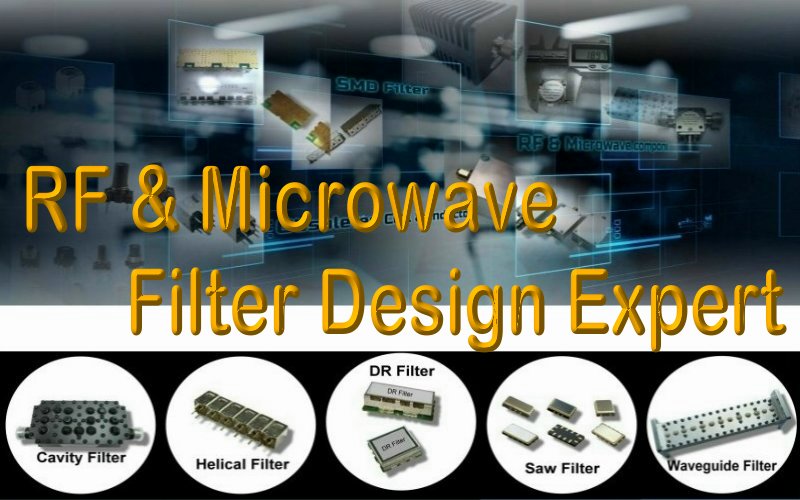
What Temwell can provide?
Temwell/Temstron design team has excellent R&D capabilities, specializing in the design and production of various RF filters, and can customize design exclusive filter products according to different project requirements. With over 27 years of experience in RF filter design, we are your most trusted partner in the development and design process.
If your team has any needs for RF LPF Filter, please feel free to contact us and get free consultation services so that we can provide you with the best solution.
Subscribe to us on Facebook for the latest product news.


